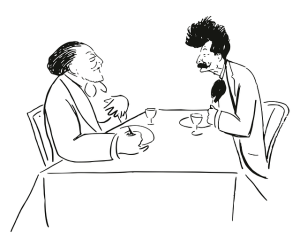Have you ever dreamed of becoming an author and getting your book published? Writing a book is hard enough – but how do you take the next step to get it published? This guide will provide all the steps on how to get a book published, from refining your manuscript to working with a publisher. You’ll be on your way to watching your dream become a reality in no time!
Understand the publishing process and options for self-publishing or traditional publishing
When it comes to researching the different publishing options for a thriller novel, it is important to take the time to investigate each option thoroughly to find the best fit. Here are some of the most popular publishing options that you should consider when researching:
Traditional Publishing:
This is one of the oldest methods authors use and involves submitting your manuscript (or proposal) directly to traditional publishers. If accepted, they will often handle editing and marketing for you and guide you through other aspects of book creation. A traditional publishing deal could get you a hefty advance on royalties too!
Self-Publishing:
Self-publishing works as an independent record label does for music – it means taking full responsibility for editing, formatting, and designing yourself. Still, it allows complete creative freedom. It grants authors control over costs and provides instant access through multiple digital channels such as Amazon Kindle Direct Publishing or Smashwords.
Subsidy Publishing:
The approach falls between traditional and self-publishing – where authors pay upfront fees in exchange for services such as printing copies, setting up their own imprint, or providing assistance with marketing/public relations activities surrounding their work. These companies work mostly online, so there are few geographical restrictions on working with them.
Print On Demand (POD):
POD gives authors unlimited inventory without committing large amounts of money upfront – meaning books can be printed only after they have been ordered. Distribution limits are lifted due to immediate availability over multiple channels.
Ebook-Only Strategies:
Ebooks-only strategies allow writers access via major e-commerce sites like Amazon Kindle Store without needing physical copies being created first, reducing costs significantly while often maintaining high visibility across digital platforms worldwide even if titles aren’t available at bricks & mortar bookstores locally yet!
At the end of the day, every author needs to evaluate their individual needs/goals carefully before committing one way or another; think about how much creative control you want. Who are you trying to write for? What particular challenges might you face along your journey? All these questions must be answered during the research process so nothing goes wrong later in the publishing phase!
Write a synopsis

A great way to start writing your synopsis is by summarizing your story in one sentence: who’s doing what, why they are doing it, and with what result. Ensure you get those three elements into that one sentence; that’s why it’s called an elevator pitch or a quick pitch, and sometimes it’s called a hook or a logline.
After writing your pitch, dive into each element of your story—who’s involved (main characters), what action they take (major events), and why these things happen (plot). You can also include details such as setting or subplots here but avoid going too far down tangents.
The key point here is to give enough detail so that readers can understand the story but not so much that it becomes overwhelming or confusing.
To make your synopsis stand out, look for ways to add suspenseful language and vivid descriptions while still remaining brief yet direct enough so there’s no mistaking your meaning or intention when read over quickly in a single sitting by an editor/reader reviewing multiple submissions at once!
For example, “When violence erupts between Alexander and his nemesis…” could become “With tensions exploding between Alexander and his nemesis…” Both sentences mean similar things, but one creates more emotion than simply stating facts. This can help someone see your novel’s excitement before starting it!
Finally – examples play an important role when making a good novel synopsis stand out from others, too! Examples include an attention-grabbing opening scene or a dramatic tension between two characters. This makes understanding easier while providing great reference points if someone has follow-up questions.
Refine your manuscript:
– Once you have a complete draft, it’s time to refine it. This includes editing, rewriting, and proofreading your book.
– Ensure everything is written in clear language and consistent with your writing style.
– Gain feedback from beta readers & revise accordingly. Ask those outside your circle to provide feedback on various aspects of the book.
Hire an editor

Hiring a professional editor to review your manuscript for clarity, structure, grammar, and other elements of quality writing is important. First, you must ensure your selected editor fits your project well. Here are some tips to help you find the perfect person for the job:
Make sure they specialize in thrillers
One of the thriller authors’ biggest mistakes when choosing an editor is working with someone who doesn’t specialize in thrillers. Look for an experienced professional with a proven track record of success with books in this genre and can provide specific examples demonstrating their skills and knowledge.
Check their references & reviews
Take time to read reviews from past clients and references they may provide you with. This will give you an idea of their editing style and competence in helping authors improve their work.
You should also assess why you need the help of an editor; is it for general line editing or proofreading? Do you require feedback on characterization or plot structure? Knowing your specific needs ahead of time will be most useful when searching for an appropriate editor.
Ask about their process
Before signing any contracts or agreeing on payment terms, ask them how they approach editing projects, what steps they take while reading through your manuscript, how long each step takes on average, etc. Familiarizing yourself with their process gives you more insight into what working together would look like before jumping right in.
Price negotiation
If you are self-publishing your book, then you should factor in the cost of hiring editors and designers (if needed). You’ll also need to account for printing costs if you release a physical copy. There will be no additional printing fees when creating digital books (ebooks), but production may require some editing or design assistance.
Additionally, many authors hire professional publicists or invest in advertising on social media platforms such as Facebook and Twitter to market their books; remember to account for this when planning your budget.
Don’t be afraid to negotiate prices if needed! Remember that editors need to earn a living just like everyone else and understand why charging more than one might typically expect/pay could be reasonable (depending on experience/specialization level).
For a more detailed understanding of what each publishing step entails price-wise, consider looking at examples from other authors who have succeeded in each phase. This will provide insights into different pricing options and allow you to decide where to invest within tight budgets!
Research potential publishers to target and understand their requirements

When it comes to submitting a manuscript for publication, there are certain requirements that publishers need authors to meet. While these vary slightly between different publishing houses and genres, here is an overview of some common requirements:
• Length: Many publishers have specific word counts they expect a piece of writing to be. A nonfiction book might require a minimum page count of 80-100, while a fiction book may need around 250-300 pages.
• Audience Profile: Publishers may ask who you think your readers will be and what age or gender demographic would appreciate your work the most. This can help determine how best to market your product, what artwork should appear on the cover, etc…
• Tone & Writing Style: Good writing should always include structure, clarity, comprehensibility, etc.; however, when pitching material for publication, you must also consider the tone/style appropriate for that particular type of literature.
• Quality & Originality: In general terms, this means free from grammatical and spelling mistakes but also extends to ensuring original content without plagiarism or copyright infringement from other works previously published elsewhere.
• Promotion Plan & Platforms Used: Today’s market requires authors to understand technology beyond words on paper – platforms such as Amazon Kindle Direct Publishing, Smashwords, etc. offer self-publishing options, whereas larger publishing houses may look favorably upon existing blogs/social media networks already actively managed.
Write a query letter

A query letter is like a pitch for your book, a cover letter introducing yourself and what makes you qualified to write the book. It’s important to make it as compelling and interesting as possible to grab the potential publisher’s attention.
To write an effective query letter, there are several key elements you should include:
Introduce yourself
– Start by introducing yourself as the project’s author and explain why you believe your project would benefit the recipient. This is also a great opportunity to showcase your experience in either writing or related fields.
Describe your project
– In this section, provide details on your book, including its title, genre/subject matter, intended readership, a summary of plot/themes addressed, and other pertinent information that will make your work stand out. Give enough information without giving away too much; focus on selling ‘the idea’ behind it rather than all its details.
Include your credentials & accomplishments
– This could include any awards or recognitions you’ve had in relation to writing or media, plus any publications/blogs where some of your works have been featured previously (include links where applicable).
Selling points
– Why should someone want to read this book? Explain why now might be the perfect timing for something like this — has anything changed or emerged recently that increases relevance? Identify some angles which could make it attractive for editors/publishers, e.g., potential crossover appeal between genres, etc.
Outline how readers may benefit from this piece – tell them how their time invested in your work will pay off! If possible, add some quotes from reviews and provide stats such as average ratings & sales figures achieved previously if available).
Request action
– End with a polite request asking them to consider publishing/further showcasing your work and leave contact details so they can stay updated with new developments (if relevant). Include sample chapters of the manuscript (if requested), interview availability, etc. Sign off politely at the end.
Create a submission package for the selected publishers

Publishers have a variety of requirements for submissions, but here are the most common:
1. A completed manuscript with a clear beginning, middle, and end. The manuscript should be proofread and edited to professional standards before submission.
2. A synopsis outlining the book’s main plot points and including any subplots or themes introduced throughout its course.
3. Sample chapters if requested by the publisher.
4. A query letter introducing yourself, your idea/manuscript, and why it would fit their company well.
Conclusion
Congratulations! You are now prepared to take the steps to publish your book. Even though the publishing process may seem intimidating and complicated, it can be navigated with a clear roadmap and dedication. Remember that self-publishing an ebook or traditional publishing a physical book have different pathways in the publishing world, so understand what each route requires.
Don’t give up; you can achieve your dream of seeing your book come alive for all your readers to enjoy. Best of luck in this journey!
If you’re working on your first novel and are looking for more help with your writing, please check out my other articles at https://ullahakanson.com/blog/
Best of luck with your writing!
Ulla
www.ullahakanson.com

